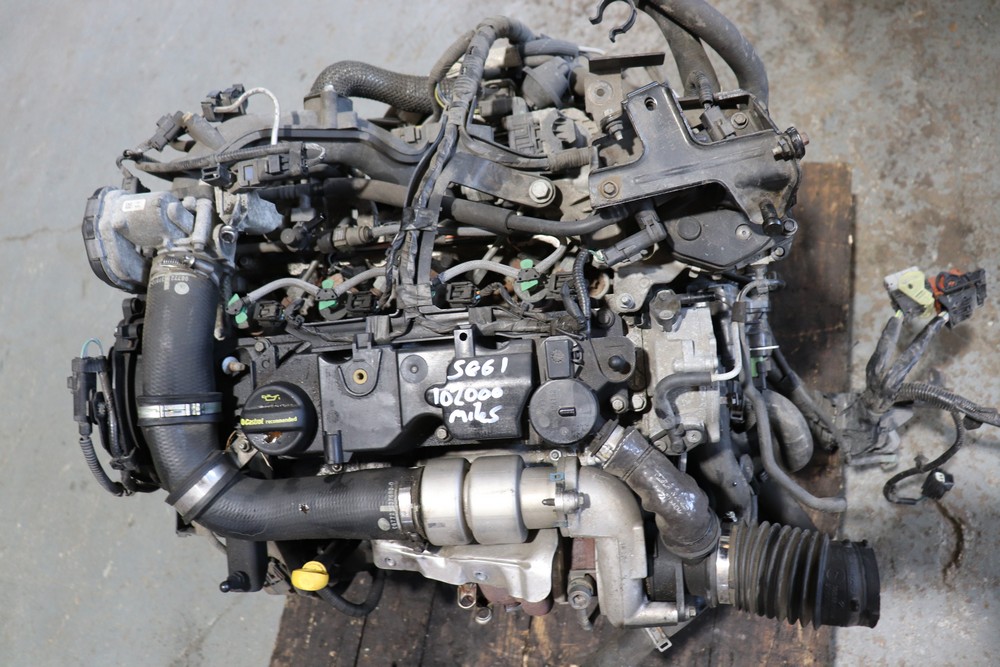Checking Out the Development of Engines: From Classic Designs to Modern Marvels
The advancement of engine technology stands for a substantial story in the background of development, noted by critical innovations that have actually continuously redefined transport and sector. From the initial steam engines that powered the Industrial Revolution to the introduction of internal burning engines that transformed movement, each phase has contributed to better effectiveness and capacity. Currently, the shift to electrical power symbolizes not just a technical change but likewise a broader dedication to ecological sustainability. As we examine these milestones, one should think about exactly how the future of engine design may unravel, testing our understandings of power and performance.
The Birth of Engine Technology
The arrival of engine modern technology noted a turning point in human development, transforming power conversion and transport. The earliest engines arised from the demand to harness mechanical power for functional use, resulting in the growth of devices that transformed numerous power kinds right into motion. The concept of the engine can be mapped back to ancient civilizations, where easy equipments, such as the waterwheel and windmill, used natural pressures to execute work. It was during the late 17th and early 18th centuries that considerable improvements started to materialize.
The development of the internal combustion engine and the innovation of the steam engine militarized an extensive shift in commercial abilities. These engines not just enhanced efficiency yet likewise expanded the scope of human movement, making it possible for unprecedented transport opportunities. The early prototypes laid the foundation for the mechanical world, promoting the increase of markets and reshaping social structures.
As engine designs developed, they integrated ingenious materials and progressed design concepts, leading the way for modern developments - ford fiesta engine. The birth of engine technology sparked an unrelenting search of performance and power, setting the phase for the vibrant development of transportation and industrial equipment that would certainly adhere to
Steam Engines and Their Influence

The heavy steam engine's impact was particularly noticeable in the transportation industry (ford fiesta engine). Steam-powered engines promoted the rapid activity of goods and individuals throughout substantial distances, efficiently reducing the geographical obstacles that had formerly impeded trade and communication. In a similar way, steamships transformed marine traveling, permitting quicker and more reliable crossings of rivers and oceans.
In market, heavy steam engines powered manufacturing facilities, enabling mass production and the surge of urban centers as centers of economic task. Vapor innovation promoted advancements in engineering and manufacturing procedures, laying the foundation for future innovations in engine layout.
The Rise of Interior Combustion
Frequently overshadowing steam power, the rise of internal combustion engines marked a transformative shift in transportation and industry throughout the late 19th and very early 20th centuries. The growth of these engines, characterized by their ability to shed gas within the engine itself, made it possible for higher effectiveness and power compared to conventional heavy steam engines. Pioneering creators such as Nikolaus Otto and Rudolf Diesel played critical roles in refining engine designs, resulting in extensive adoption in cars, boats, and commercial equipment.
The internal burning engine's portable size and relatively lightweight nature facilitated the appearance of individual automobiles, revolutionizing specific wheelchair and reshaping urban landscapes. By making it possible visit this site for faster travel and the efficient transportation of products, these engines catalyzed financial growth and fostered globalization. The versatility of fuel options, consisting of gas and diesel, additionally boosted their appeal, permitting for diverse applications across different markets.
Regardless of the environmental problems that would certainly later on emerge, the preliminary attraction of interior burning modern technology lay in its transformative possibility. As society accepted this technology, the structure was laid for modern-day transport systems, establishing internal burning engines as a foundation of industrial innovation and life throughout the 20th century.
Developments in Engine Performance
As internal combustion engines became important to transport and industry, the focus changed towards improving their efficiency to satisfy growing needs for efficiency and sustainability. Developments in engine layout, material scientific research, and innovation have significantly added to this development.
One major innovation is the development of turbocharging, which enables increased air consumption, resulting in more total gas combustion and enhanced power result without enlarging engine dimension. Furthermore, variable shutoff timing systems have actually been implemented to optimize engine performance across different RPM arrays, consequently boosting fuel effectiveness.
The use of innovative fuel injection innovations, such as straight injection, has also played a crucial function. This technique enables even more precise control over the fuel-air mix, advertising much better combustion and minimizing discharges. Additionally, light-weight materials, consisting of aluminum and composite elements, have been embraced to reduce total engine weight, bring about improved efficiency.
These developments reflect a more comprehensive trend within the auto sector, where the synergy in between design innovation and environmental factors to consider drives the continuous pursuit for greater performance in internal burning engines. Because of this, contemporary engines are currently extra powerful, cleaner, and efficient than ever, paving the way for a much more lasting future in transport.
The Shift to Electric Power
With growing problems over environmental impact and fossil fuel reliance, the automobile sector is experiencing a substantial shift towards electrical her comment is here power. This change is driven by a combination of technical innovations, governing stress, and transforming customer preferences. Electric automobiles (EVs) supply a compelling choice to conventional internal burning engines, boasting minimized greenhouse gas emissions and lower operating costs.
The increase of battery modern technology has actually been a game changer, with lithium-ion batteries coming to be a lot more effective and cost-efficient. Improved energy density and faster charging abilities have made EVs much more practical for daily use. Furthermore, federal governments worldwide are applying incentives and setting enthusiastic targets for terminating nonrenewable fuel source automobiles, therefore accelerating the fostering of electric power.
Major automakers are investing heavily in r & d, resulting in the introduction of a diverse series of electric versions. This consists of not just automobile but also business cars and public transportation solutions. As charging framework expands and battery innovation proceeds to improve, the change to electric power is positioned to improve the vehicle landscape, promoting sustainability and innovation in the years to come. The future of transport is electric, and the momentum is obvious.
Conclusion
The advancement of engine technology stands for a substantial trajectory of advancement that has exceptionally influenced transport and industry. From the fundamental heavy steam engines to the transformative internal combustion engines, each advancement has actually added to enhanced flexibility and economic growth. The current shift towards electric power highlights a crucial commitment to sustainability, driven by improvements in battery modern technology. This ongoing evolution not only shows transforming social requirements but additionally highlights the capacity for a cleaner and much more effective future in engine design.

 Rider Strong Then & Now!
Rider Strong Then & Now! Brian Bonsall Then & Now!
Brian Bonsall Then & Now! Anthony Michael Hall Then & Now!
Anthony Michael Hall Then & Now! Jenna Von Oy Then & Now!
Jenna Von Oy Then & Now! Dawn Wells Then & Now!
Dawn Wells Then & Now!